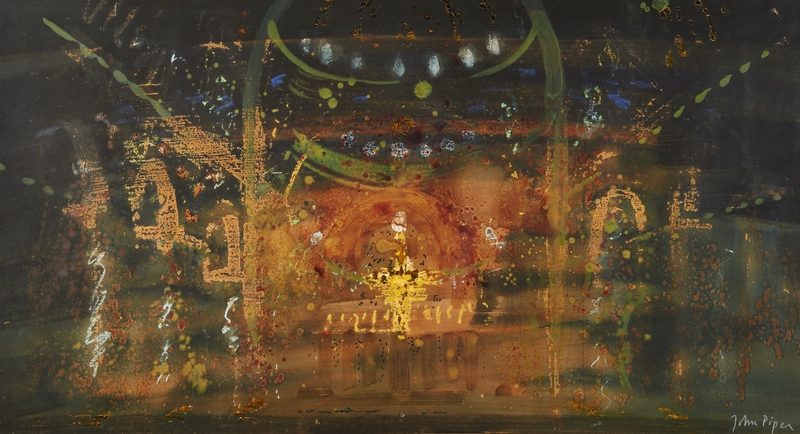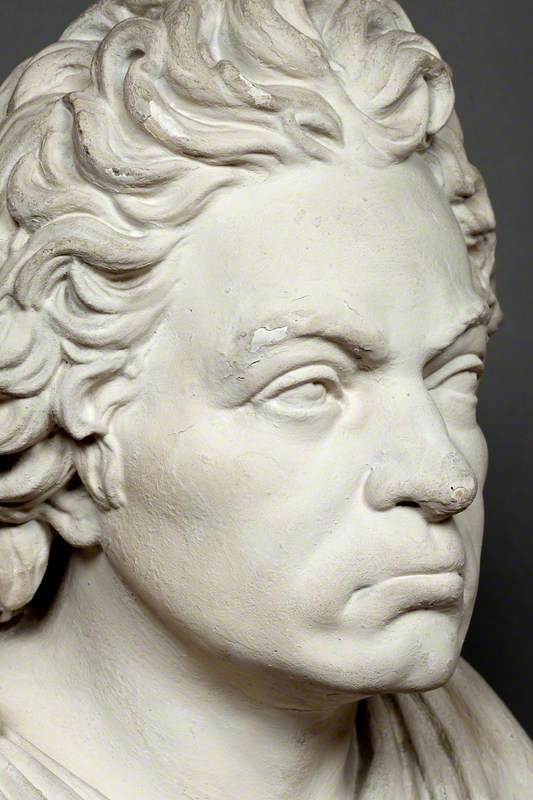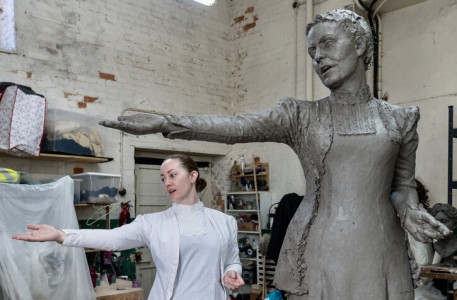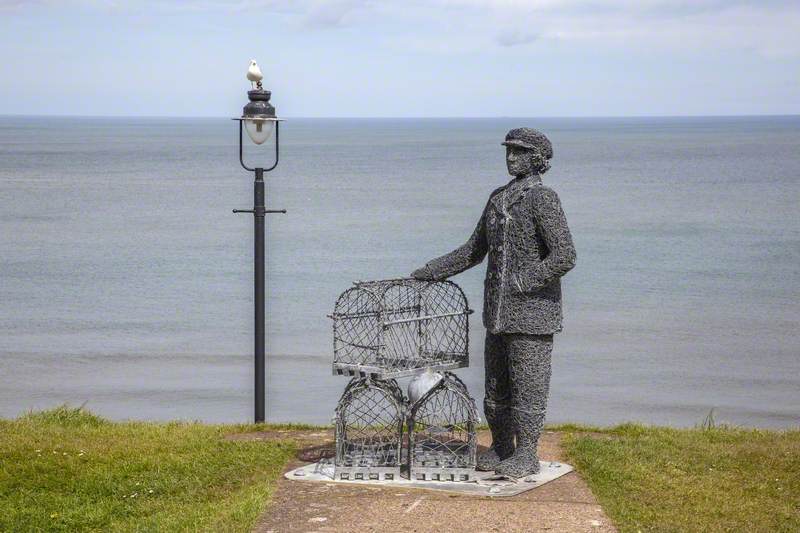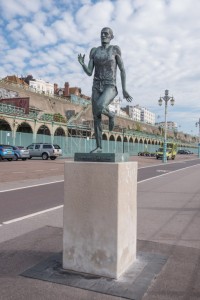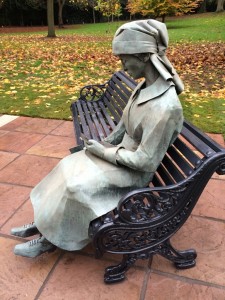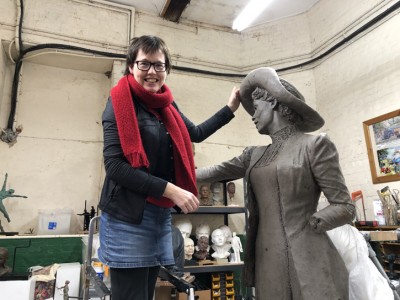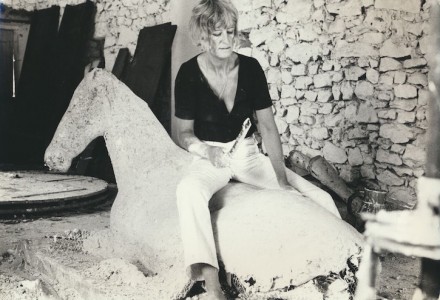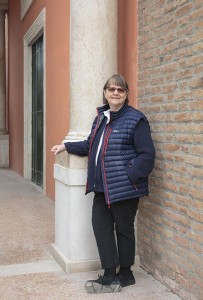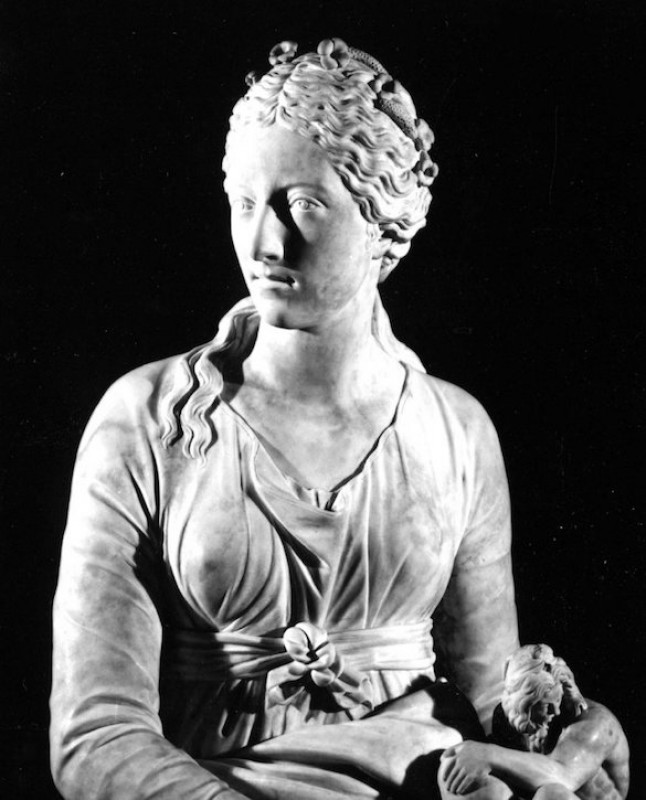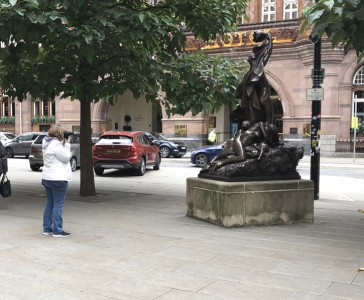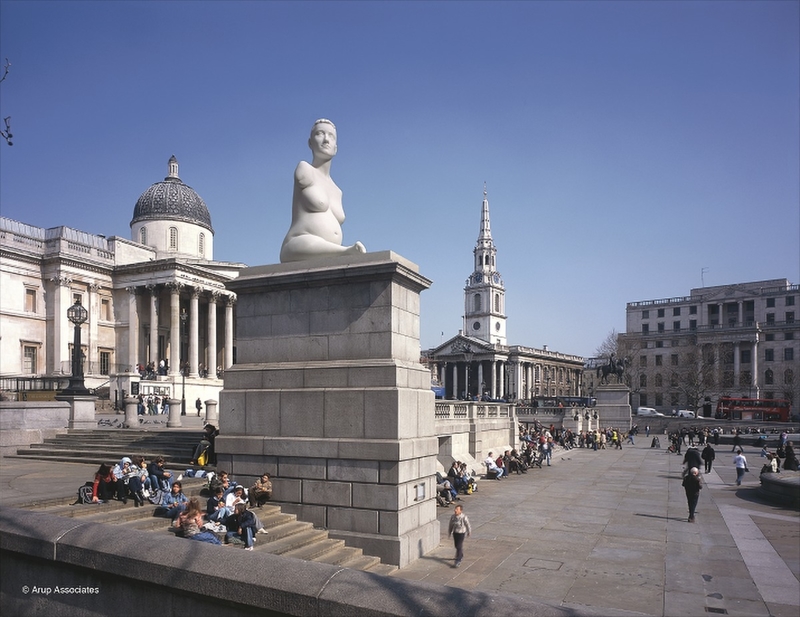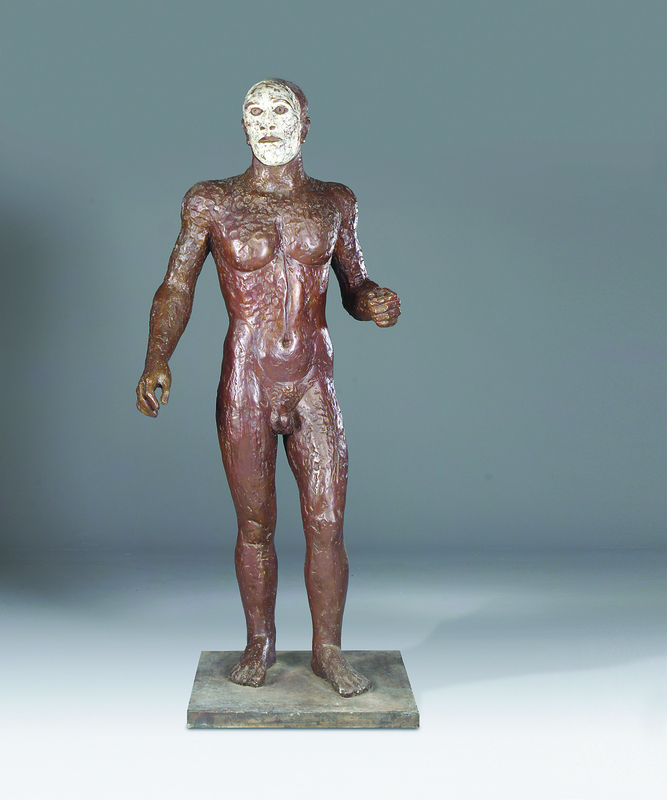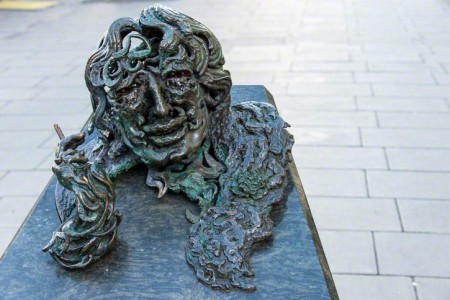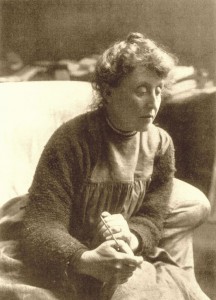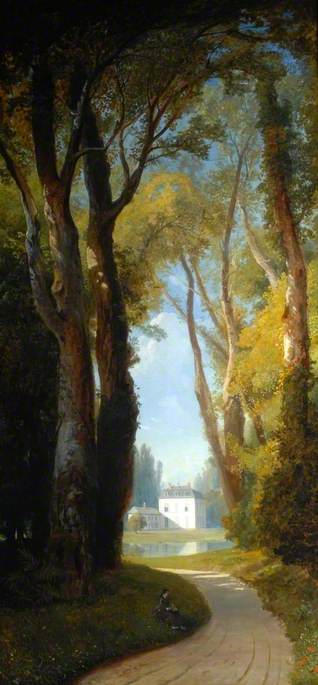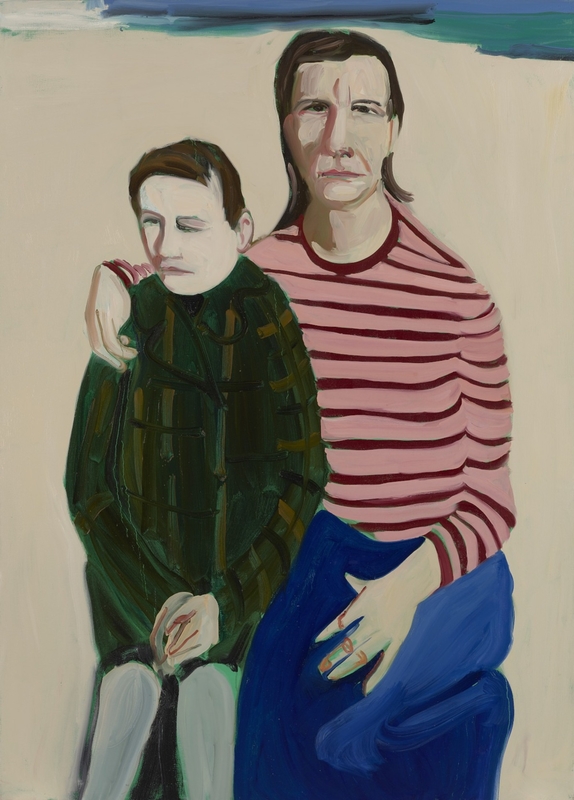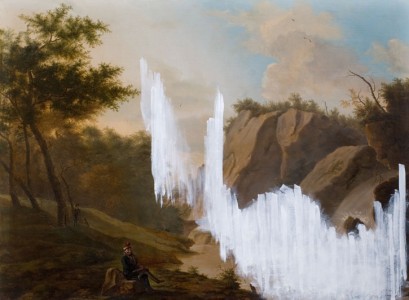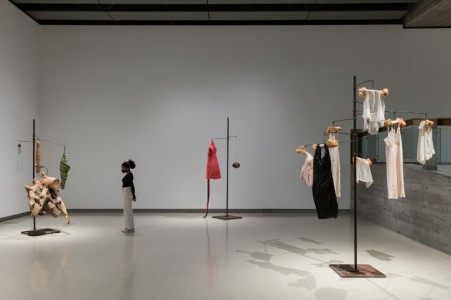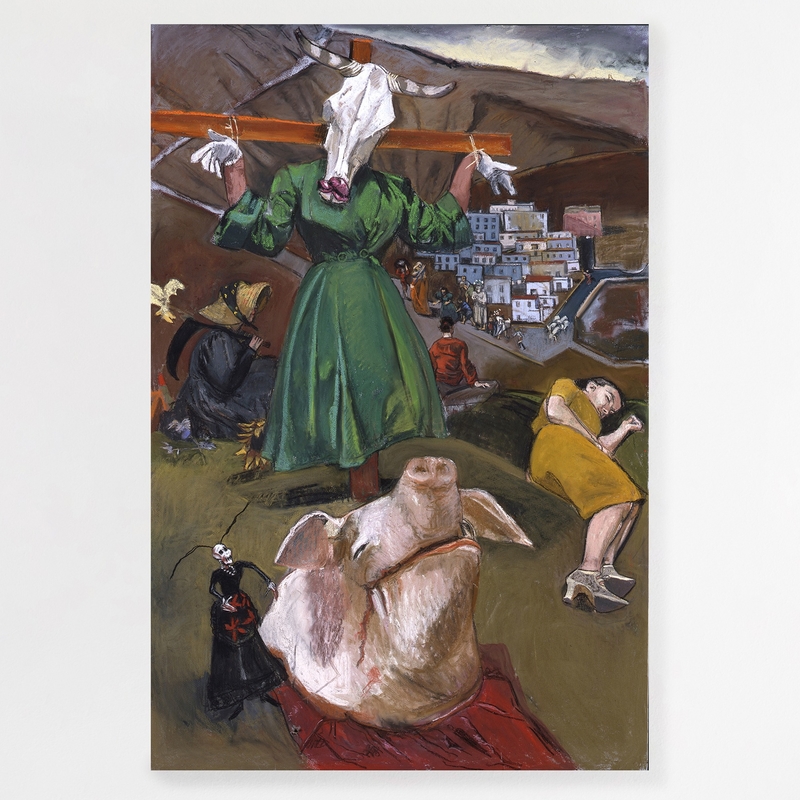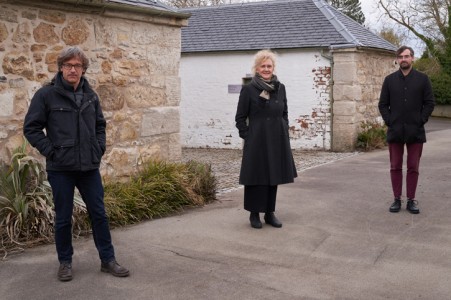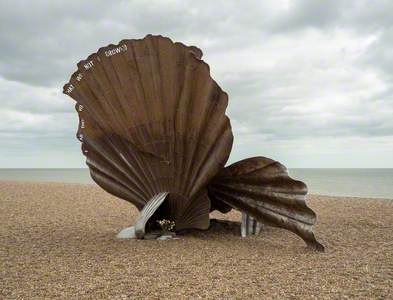On the beach near Aldeburgh, Suffolk, a giant scallop shell rises up from the shingle. The sculpture is a tribute to composer Benjamin Britten who lived in Aldeburgh and walked almost daily along the stretch of coastline between there and Thorpeness. It is made by local-born artist Maggi Hambling, an ardent fan of Britten's music.
Scallop: A Conversation with the Sea
2003
Maggi Hambling (b.1945) and Sam and Dennis Pegg 
Scallop, created in 2003, is formed of two halves of a broken shell, fabricated from steel. One half stands upright, its sea-facing surface polished and catching the shimmering light. The other half of the shell lies prone, making a sort of platform. Cut high into the sculpture's upper edge is the line 'I hear those voices that will not be drowned' from Hambling's favourite Britten opera, Peter Grimes.
Scallop: A Conversation with the Sea
2003 by Maggi Hambling (b.1945) 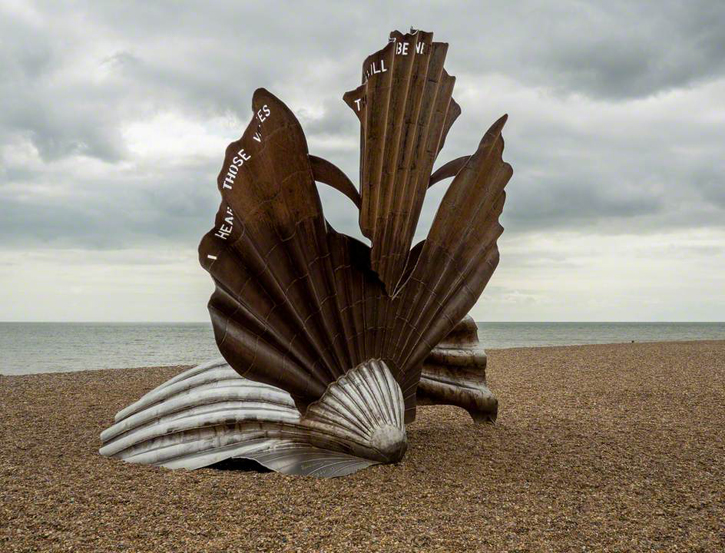
Hambling sees Scallop as more than just a sculpture. It was designed to also be a shelter and a seat, a place where visitors can rest and 'contemplate the mysterious power of the sea'. She wants people to interact with it: 'When somebody climbs up on it to sit down and watch the sea, or when a couple creeps in underneath it to make love, then it will be complete.'
It was a labour of love for Hambling. She wasn't paid for it and grafted hard to pull enough money together for its construction (selling some of her paintings to help raise funds). It is a gift from the artist for everyone to enjoy.
Scallop: A Conversation with the Sea
2003 by Maggi Hambling (b.1945) 
Not everyone appreciates it, however. Like other public sculptures by the artist (notably her recent statue commemorating Mary Wollstonecraft) Scallop is an object of controversy. Many locals and lovers of that stretch of coastline were vehemently against sitting the sculpture on the unspoilt beach at Aldeburgh, arguing that it would ruin the view. And it isn't just locals who loathe it. In 2015, Guardian art critic Jonathan Jones listed it among the six worst works of British public art.
Scallop: A Conversation with the Sea
2003 by Maggi Hambling (b.1945) 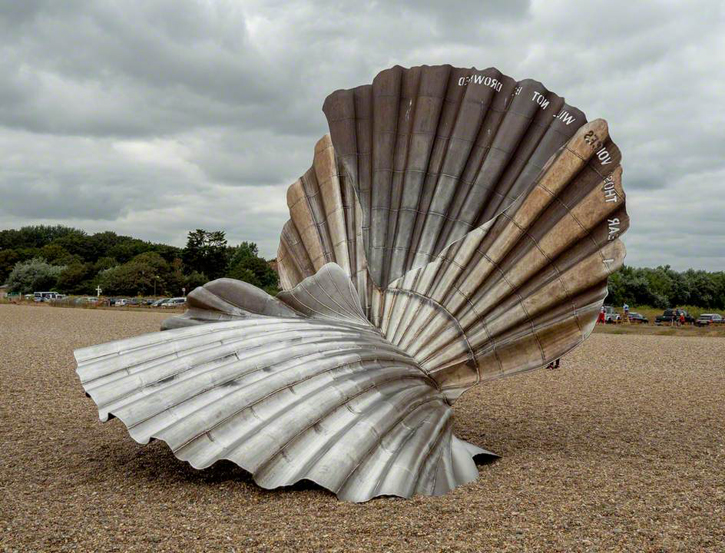
But there are also those who love it. Author Susan Hill is a frequent visitor to Aldeburgh and cannot imagine the beach without Scallop. She describes it as a 'glorious thing of power and beauty' that looks different from every angle in the changing light. What's more, Hill knew Britten, and feels sure that he would have approved of this tribute to him.
Scallop: A Conversation with the Sea
2003 by Maggi Hambling (b.1945) 
Whether you love it or loathe it, Scallop, for the foreseeable future at least, isn't going anywhere. It was made to withstand the elements and has so far managed to weather the storm surrounding it.
Maggie Hills, Project Officer at Art UK
A version of this article was originally published by The Guardian as part of The Great British Art Tour

